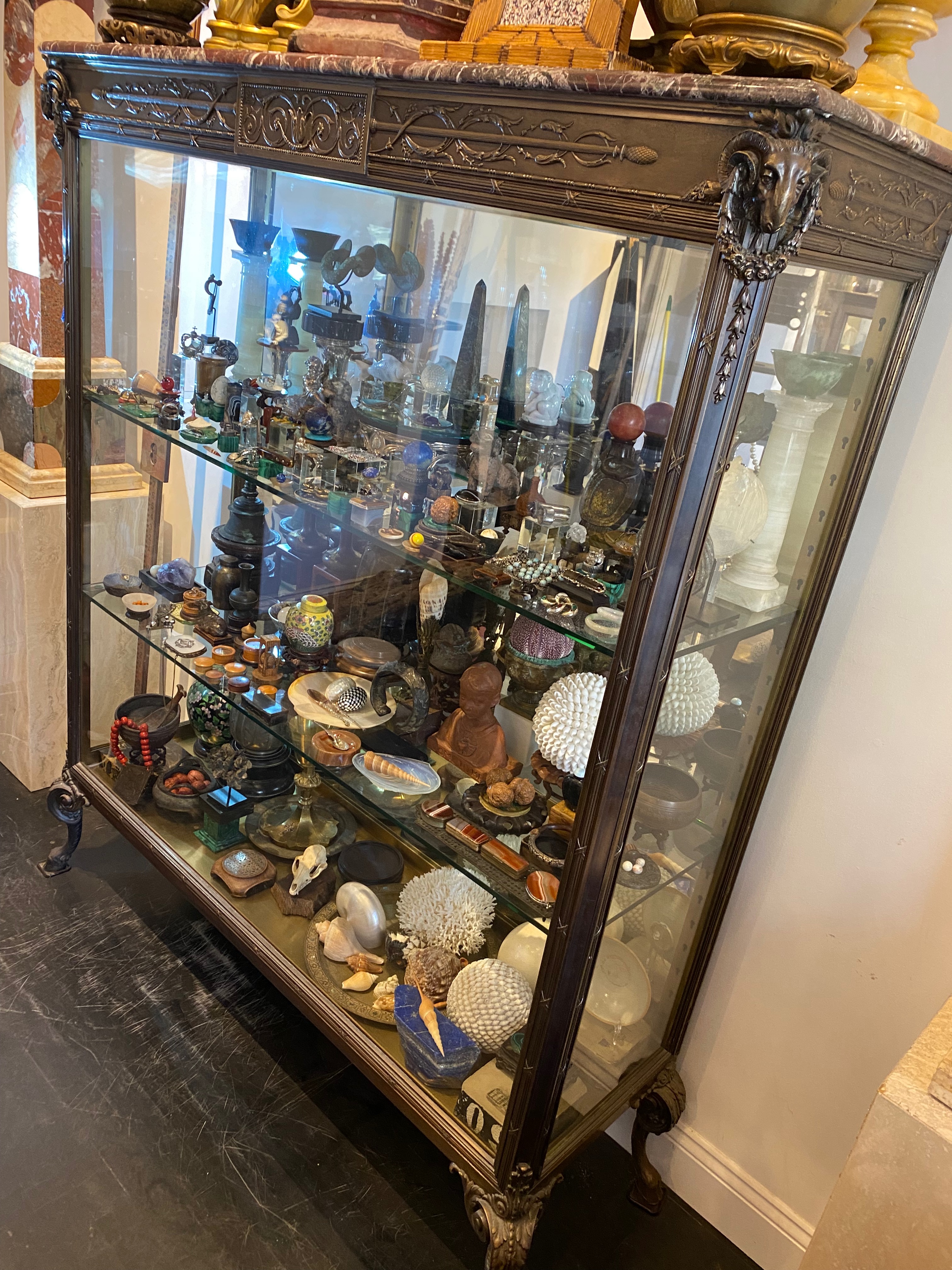

Title: Large Antique Sculptured Display Case Made Of Solid Bronze With Marble Top
Shipping: $29.00
Artist: N/A
Period: 19th Century
History: Art
Origin: North America > United States
Condition: N/A
Item Date: N/A
Item ID: 602
This is truly a museum piece—a one-of-a-kind, spectacular late 19th-century Antique very large sculptured display case made of solid bronze and accompanied by its original marble top. It features two beautifully detailed ram heads in each front corner, with Ram's feet supporting the display case. This was undoubtedly custom-made to someone's specifications back in the 19th century. The single casting suggests that it must have cost a fortune in its day. A spectacular piece of art! It would be the first thing someone would notice upon entering a room. Imagine it as a showcase for the treasures and heirlooms you've collected over a lifetime. Featuring a mirrored back and two glass shelves, the display case is in excellent condition. It weighs approximately 350 pounds, with dimensions of 53 1/2" inches long, 64 1/2" inches tall, and 17" inches deep. I have owned it for 20 years and am reluctantly parting with it. It was wired for lighting at some point in the 1960s. The lighting of the display case sets the mood for the room in the evening, providing an absolutely beautiful reflecting and radiating look. This rare piece may not become available in most collectors' lifetimes. Feel free to contact me for more information if needed. Owning a bronze display case in the 1800s was a symbol of affluence and a reflection of one's appreciation for art, culture, and history. Today, these historical artifacts continue to captivate collectors and enthusiasts, offering a glimpse into the rich and elegant aesthetics of the 19th century.
In the 1800s, bronze display cases in homes and museums were a testament to the craftsmanship and opulence of the era. These cases served both functional and aesthetic purposes, showcasing prized possessions and artifacts while adding a touch of sophistication to interior spaces. In homes, especially among the affluent, bronze display cases were often custom-made to suit the specific tastes and preferences of the owners. Elaborate detailing, such as intricate designs and motifs, were common, showcasing the artistic prowess of the craftsmen. Ram heads and other ornate elements were popular choices, adding a touch of regality to the display. Museums, during this period, saw a growing interest in exhibiting collections of art, antiquities, and scientific specimens. Bronze display cases became instrumental in presenting these items to the public, providing a secure and visually appealing means of showcasing the cultural and scientific wealth of the time. The use of bronze in these cases was not only for its aesthetic appeal but also for its durability and resistance to corrosion. The metal's ability to withstand the test of time made it a preferred choice for preserving and displaying valuable items. As technology advanced, lighting became an essential addition to these display cases. By the 1960s, many bronze cases were wired for lighting, enhancing the visual impact of the showcased items, especially in the evening.